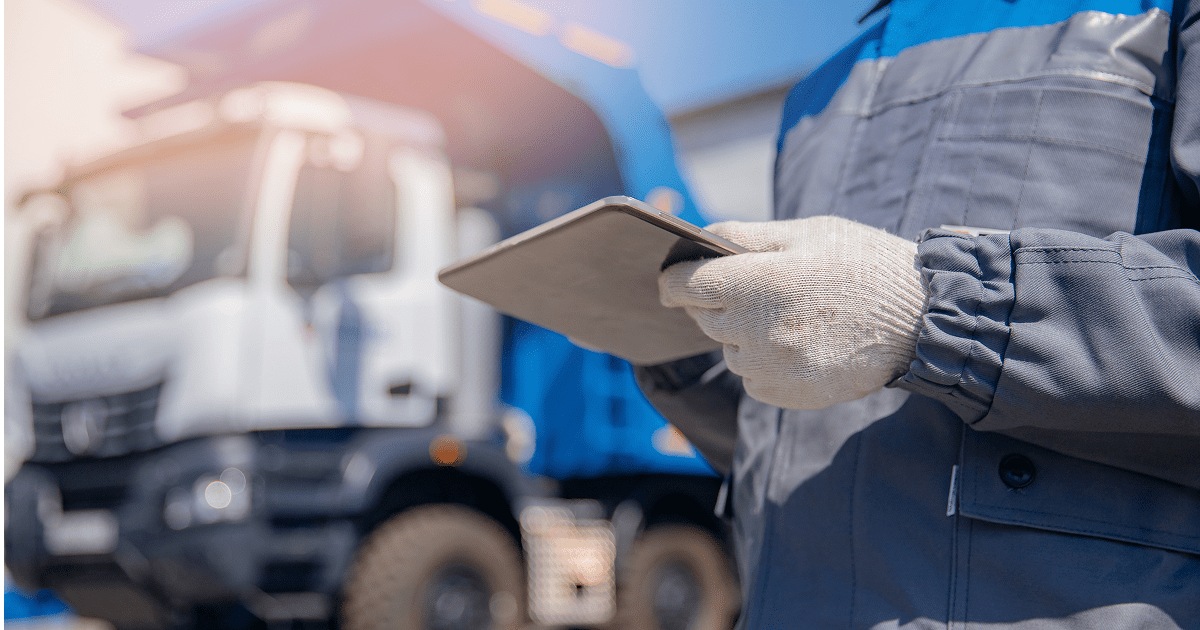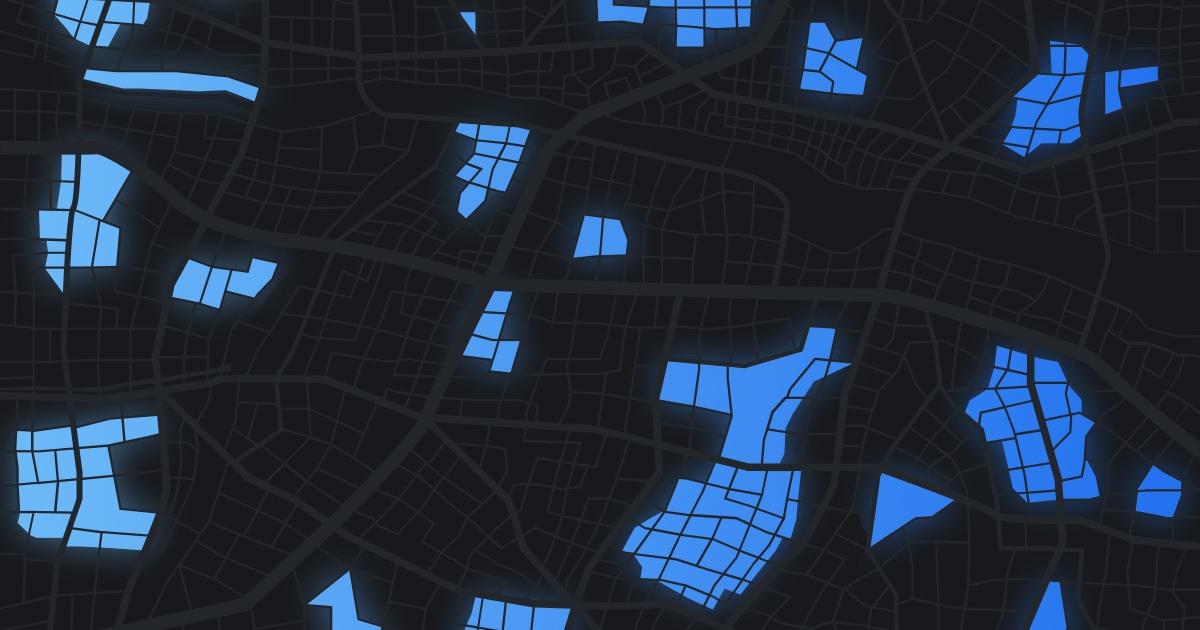Here's a paradox that should keep every waste management executive awake at night: The waste management industry is exploding from $179.52 billion in 2024 toward a projected $387.64 billion by 2034—representing 8.20% compound annual growth (CAGR)—yet most WM sales teams are still calling cold prospecting like it's 1995.
Think about your team's current prospecting process. They're working their established networks, following up on referrals from existing customers, and cold calling property management companies to ask, "Are you happy with your current waste service?"
Meanwhile, somewhere in your territory, a facilities manager is researching "medical waste disposal compliance" or "bulk cardboard recycling requirements" after their building added new tenants with specialized needs - they need your services, yet your team has no idea they exist.
This isn't just a sales inefficiency problem. It's a fundamental misunderstanding of how decision-makers at the property-level actually decide on a waste management vendor.
The companies winning in this growth market aren't just working referral networks or waiting for contract renewals - they're identifying property managers actively researching waste solutions right now, while their competitors interrupt satisfied customers with unwanted sales calls.
The Buyer Intent Revolution That's Reshaping Waste Sales

The explosive growth in commercial waste isn't just about more buildings generating more trash. According to the UN Environment Programme, municipal solid waste generation is predicted to grow from 2.1 billion tonnes in 2023 to 3.8 billion tonnes by 2050. That’s 25 Empire State Building-sized piles of trash.
But here's what that really means for your sales process: property managers are researching waste solutions more frequently than ever before.
Urbanization is accelerating waste research: As more businesses concentrate in urban areas, individual properties house increasingly diverse tenant mixes. An office building that once generated predictable paper waste now houses e-commerce companies, medical practices, and restaurants with specialized disposal needs. Each tenant change creates moments when property managers actively research new waste management solutions.
E-commerce has fundamentally altered buyer intent patterns: The pandemic accelerated e-commerce adoption, but the sales implications are only now becoming clear. Properties that handled standard office waste five years ago now deal with cardboard volumes that overwhelm traditional service arrangements. A recent industry analysis found that commercial packaging waste has grown 41% faster than overall waste volumes. More importantly, this creates constant moments when property managers research specialized recycling and disposal solutions.
Regulatory complexity is driving active buyer research: Government initiatives targeting plastic pollution and requiring enhanced recycling documentation are forcing properties to reconsider their waste management approaches. Buildings that were compliant five years ago now face regulatory requirements that trigger active research for compliant waste service providers.
Here's the critical insight: these changes create buyer intent signals. Property managers don't randomly decide to research waste management solutions—they research when they have specific problems or requirements that their current service can't handle.
According to recent B2B research, 90% of B2B buyers research 2-7 websites before making a purchase, and buyers conduct an average of 12 different online searches before interacting with a website. This research provides a “trail of breadcrumbs” for your sales team to use as outreach triggers that can turn into opportunities for sales.
Buyer Intent: Identifying The Problems You Can't See
Your industry faces a timing problem disguised as a prospecting problem. Every day, property managers in your territory are actively researching waste management solutions, comparing providers, and evaluating service changes. But your sales teams have no systematic way to identify who's in active research mode versus who's satisfied with their current arrangements.
Property managers actively searching for "medical waste disposal requirements" or "bulk cardboard recycling services" represent immediate opportunities. But you're calling them randomly, hoping to catch them during their research phase, rather than identifying when they're actually in evaluation mode.
This explains why some waste companies consistently win larger, more profitable contracts while others compete primarily on price. The difference isn't service quality or operational efficiency—it's the ability to identify and contact prospects when they're actively researching solutions. Current cold calling statistics show that traditional prospecting achieves only a 2.3% success rate, with 87% of cold calls going unanswered, going to voicemail, and only 1.5% resulting in actual appointments.
Think about your current sales process. Your team identifies a commercial property, researches the management company, makes cold calls trying to reach the facilities manager, and eventually asks some version of "Are you happy with your current waste service?" This approach assumes you'll randomly time your outreach during their brief evaluation windows.
But commercial waste research doesn't work that way. Property managers research waste solutions when specific problems arise: new tenant requirements, compliance issues, service inadequacies, or contract renewal periods. They spend weeks researching options, then make decisions quickly. If you call during their satisfied periods, you're interrupting. If you call during their research periods, you're helping.
The companies that consistently win have solved the buyer intent timing problem with tools like Convex, which simplify their sales process by providing signals for decision-makers at the property level.
The Technology Response: From Cold Calls to Warm Timing
A new category of technology is emerging to solve this buyer intent timing problem. Instead of guessing when property managers might be receptive to waste management conversations, buyer intent platforms identify when they're actively researching solutions right now.
These systems track digital research signals that indicate active buyer interest: searches for waste management services, visits to industry websites, downloads of compliance guides, and research into specialized disposal solutions. When a facilities manager in your territory searches for "industrial waste disposal regulations," you get an alert that they're in evaluation mode.
This represents more than just better timing—it's a fundamental change in how you can operate. Instead of interrupting property managers with cold calls, you can initiate conversations with prospects who are already researching waste management solutions. According to recent industry research, 73% of B2B marketers are already using or planning to use buyer intent data, with 97% believing it provides a competitive advantage.
Here's how buyer intent technology works:
Research Signal Tracking monitors when property managers search for waste management solutions, compliance information, or specialized services that indicate active evaluation.
Signal Strength & Timing Intelligence identifies the moments when prospects transition from research into active purchasing motions, giving you perfect timing for outreach.
Intent Verification distinguishes between casual research and serious evaluation, so you focus on prospects likely to make decisions.
Event-based Intelligence reveals when prospects are filing permits, when tenant changes occur, when decision-makers transition to new companies, or when a building is sold to a new owner - these can be perfect triggers for warm outreach.
Supporting this buyer intent intelligence, property data platforms like Convex provide the conversation context that transforms cold calls into consultative discussions. This comes with a basic understanding of:
A property's operational complexity
Their compliance requirements
Identifying their service gaps before you pick up the phone
This transformation from cold calling to warm timing isn't theoretical—it's happening right now. While traditional waste companies continue interrupting property managers with generic pitches, early adopters are using buyer intent signals to initiate conversations with prospects already researching solutions. The difference in results is measurable and dramatic.
The Competitive Implications for Your Business
Early adoption of buyer intent technology is creating competitive advantages that compound over time. Companies using platforms like Convex aren't just finding more prospects—they're finding prospects who are actively researching waste management solutions while their competitors cold call satisfied customers.
This creates a winner-take-all scenario where timing-enabled companies capture disproportionate market share. While your traditional competitors interrupt property managers with generic pitches, buyer intent users initiate conversations with prospects already in evaluation mode.
Here's what this means for your business:
Timing Advantage: When you call prospects who are actively researching waste solutions, you're helping rather than interrupting. This fundamental shift transforms how property managers perceive your outreach.
Conversion Efficiency: Prospects in active research mode convert at dramatically higher rates than randomly contacted property managers. Your close rates improve because you're talking to people ready to make decisions.
Competitive Positioning: While competitors fight over obvious prospects through price competition, buyer intent intelligence identifies service evaluation opportunities before they become visible to traditional prospecting.
Territory Intelligence: Your sales teams can systematically identify active buyers across entire markets rather than randomly hoping to discover opportunities during cold outreach.
The data supports this competitive advantage: research shows that 65% of sales reps say access to buyer intent data significantly improves their ability to close deals, while 72% of buyers are more likely to engage with sales reps who provide personalized content tailored to their specific needs.
Strategic Decisions You're Facing

The buyer intent transformation in commercial waste sales raises key questions for you as an industry leader:
Investment timing: Buyer intent platforms represent new operational expenses, but early adopters are seeing immediate ROI through improved conversion rates and timing precision. The question becomes whether you invest now or wait while competitors gain first-mover advantages with active buyers.
Competitive positioning: As buyer intent adoption increases, traditional cold calling methods become increasingly disadvantageous. If you delay technology adoption, you risk losing market share to competitors who can identify and contact active researchers first.
Sales process redesign: Buyer intent intelligence requires different sales approaches than traditional methods. Instead of cold calling about generic services, your teams need to engage prospects who are already researching specific solutions.
Technology integration: Most commercial services companies use multiple systems for CRM, prospecting, and customer management. Buyer intent platforms that integrate property intelligence with research signals may provide operational advantages beyond just better timing.
The urgency for technology adoption is clear: current research indicates that 54% of sales professionals believe reaching out to prospective clients is more challenging now than in the past five years, while 82% of B2B decision makers think sales reps are unprepared for their calls.
What's Coming Next
Looking ahead, the timing advantages currently available to early adopters will likely become industry standards. As buyer intent adoption increases, competitive advantages will shift toward response speed, solution quality, and operational efficiency rather than just superior timing intelligence.
However, the current window represents a significant opportunity for companies willing to modernize their sales approaches. The waste management market's projected growth will create enormous opportunities, but they'll be distributed unevenly. Companies with systematic approaches to identifying active buyers will capture a disproportionate share.
The broader trend suggests that all property-focused industries—HVAC, janitorial, security, and roofing—are actively adopting similar buyer intent approaches. Industry projections indicate that 75% of B2B companies will implement AI for sales processes by 2025, with AI analytics improving efficiency by 50%. If you develop expertise with timing intelligence now, you'll be positioned for expansion into adjacent markets as opportunities arise.
Beyond the Timing Gap
The $387 billion growth opportunity in commercial waste management won't be captured through traditional cold calling methods. The companies that will dominate this market are those solving the buyer intent timing problem through systematic identification of property managers actively researching waste solutions.
This transformation represents more than just a technological upgrade—it's a fundamental shift from interruptive selling to perfect timing. Instead of asking "Are you happy with your current waste service?" successful teams are saying, "I noticed you've been researching specialized recycling compliance—we help properties exactly like yours solve those requirements."
The waste companies already implementing buyer intent intelligence for timing precision are generating measurable results while their competitors continue interrupting satisfied customers with unwanted calls. The timing advantage won't remain invisible forever, but the companies that can see active buyers first will establish competitive advantages that compound over time.
For you as an industry leader evaluating this technology shift, the question isn't whether buyer intent intelligence will transform commercial waste sales—it's whether you'll be an early adopter, capturing active buyer advantages, or a late adopter cold calling satisfied customers while competitors close deals with prospects actively researching solutions.
Current data shows that 57% of C-level executives and VPs prefer phone contact as their preferred method of being contacted, but only when the timing and relevance are right.
Ready to see which property managers in your territory are actively researching waste management solutions right now?
Schedule a demo to discover how Convex's buyer intent signals can help your team identify prospects in evaluation mode instead of interrupting satisfied customers with cold calls.
Share



![Inbound vs Outbound Sales for Commercial Services [2025]](/_next/image?url=https%3A%2F%2Fimages.ctfassets.net%2Fbva4sbdc8p9r%2F6NMwDZPptrxmnyVSierCwe%2Fa976905c390479329de6e284f1c7d5d5%2F010203-Convex-Blog-InboundvsOutboundSalesforCommercialServices-MainHero-1200x630_1x.jpg&w=3840&q=75)

